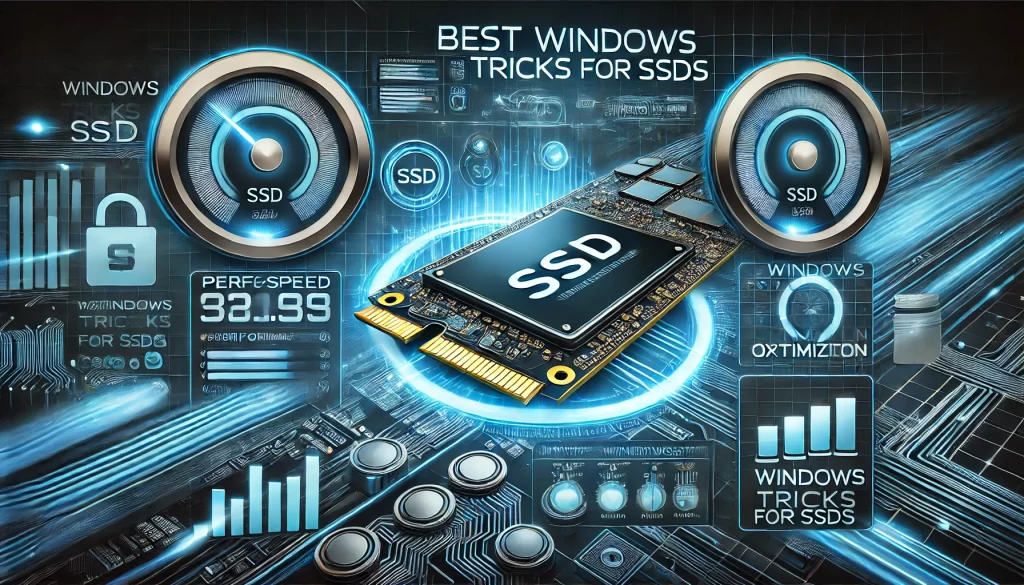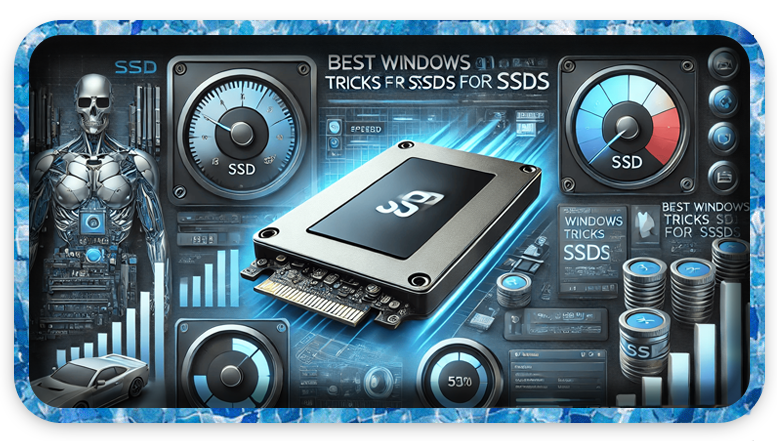Estimated Reading Time: 2 min
Here are some Windows tricks and optimizations for SSDs to enhance performance, lifespan, and efficiency:
🔹 1. Enable TRIM
TRIM helps Windows manage SSD storage efficiently by clearing deleted data properly.
- Open Command Prompt (Admin) and type:
fsutil behavior query DisableDeleteNotify- If 0 is returned, TRIM is enabled.
- If 1, enable it by running:
fsutil behavior set DisableDeleteNotify 0
🔹 2. Disable Superfetch & Prefetch (Windows 10 & Below)
These are designed for HDDs and can reduce SSD lifespan.
- Open Run (
Win + R), typeservices.msc, and press Enter. - Find SysMain (Superfetch), right-click → Properties.
- Set Startup Type to Disabled.
- Do the same for Prefetch (in
regeditunderHKEY_LOCAL_MACHINE\SYSTEM\CurrentControlSet\Control\Session Manager\Memory Management\PrefetchParameters).

🔹 3. Disable Disk Defragmentation
SSDs don’t need defragmentation, as it wears them out faster.
- Open Run (
Win + R), typedfrgui, press Enter. - Click Change Settings.
- Uncheck “Run on a schedule”.
Note: Windows 10+ optimizes SSDs differently (so this isn’t as critical).
🔹 4. Enable High-Performance Power Plan
- Open Control Panel → Power Options.
- Select High Performance or Ultimate Performance (
Win + X→ Power Options → Additional power settings).
🔹 5. Move Pagefile to Another Drive (Optional)
If you have a secondary HDD, move the pagefile to it to reduce SSD wear.
- Open System Properties (
Win + R→sysdm.cpl). - Go to Advanced → Performance → Settings → Advanced → Virtual Memory → Change.
- Uncheck Automatically manage.
- Select SSD, click No Paging File, then select HDD and click System Managed.
🔹 6. Disable Hibernation (If Not Needed)
Hibernation writes RAM data to SSD, taking up space and causing unnecessary writes.
- Open Command Prompt (Admin) and type:
powercfg -h off
🔹 7. Optimize Windows Write Caching
- Open Device Manager (
Win + X→ Device Manager). - Expand Disk Drives, right-click SSD, select Properties.
- Go to Policies tab → Enable Write Caching.
🔹 8. Disable Indexing for SSD
Indexing speeds up searches for HDDs but is unnecessary for SSDs.
- Open This PC → Right-click SSD drive → Properties.
- Uncheck “Allow files on this drive to have contents indexed”.
🔹 9. Keep at Least 10-15% Free Space
SSDs need some free space to function efficiently. Avoid filling the drive completely.
🔹 10. Update SSD Firmware & Chipset Drivers
Manufacturers release firmware updates that improve performance and longevity.
- Check Samsung Magician, Crucial Storage Executive, or your SSD brand’s software.
Bonus: Install Windows on SSD for Best Performance
- If Windows is still on an HDD, migrating to SSD will drastically improve boot times and performance.
Let me know if you need detailed steps on any of these! 🚀

